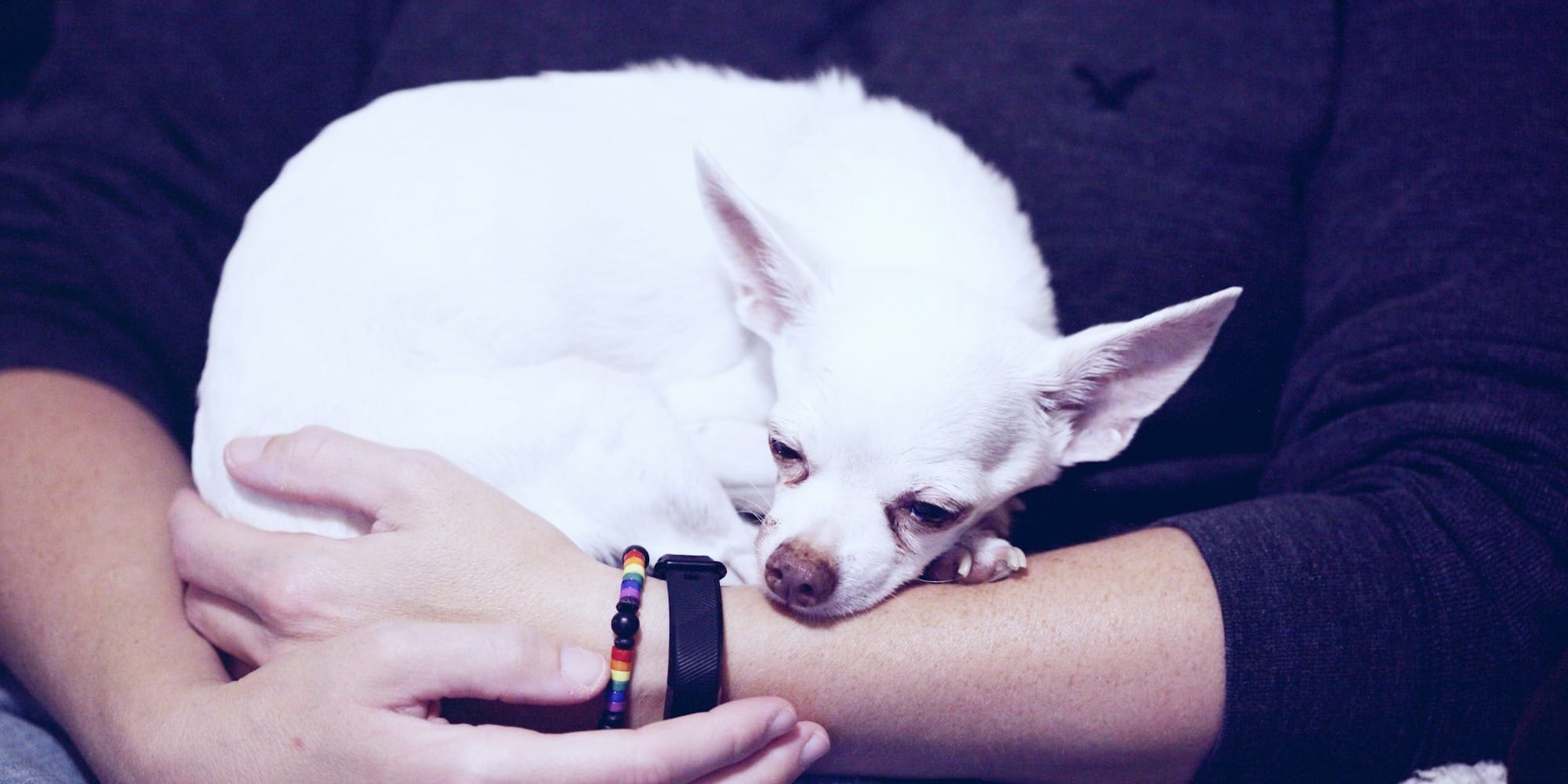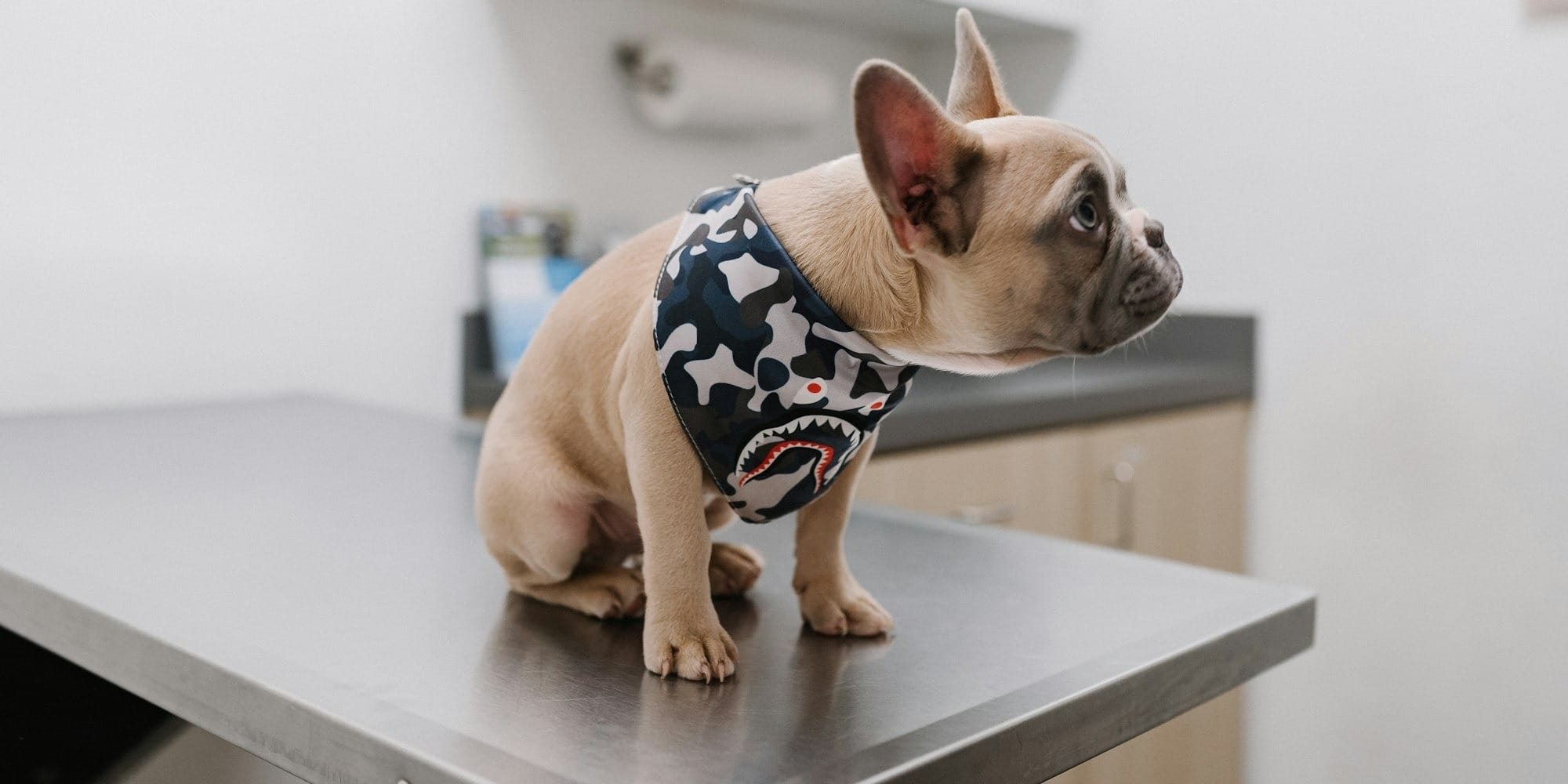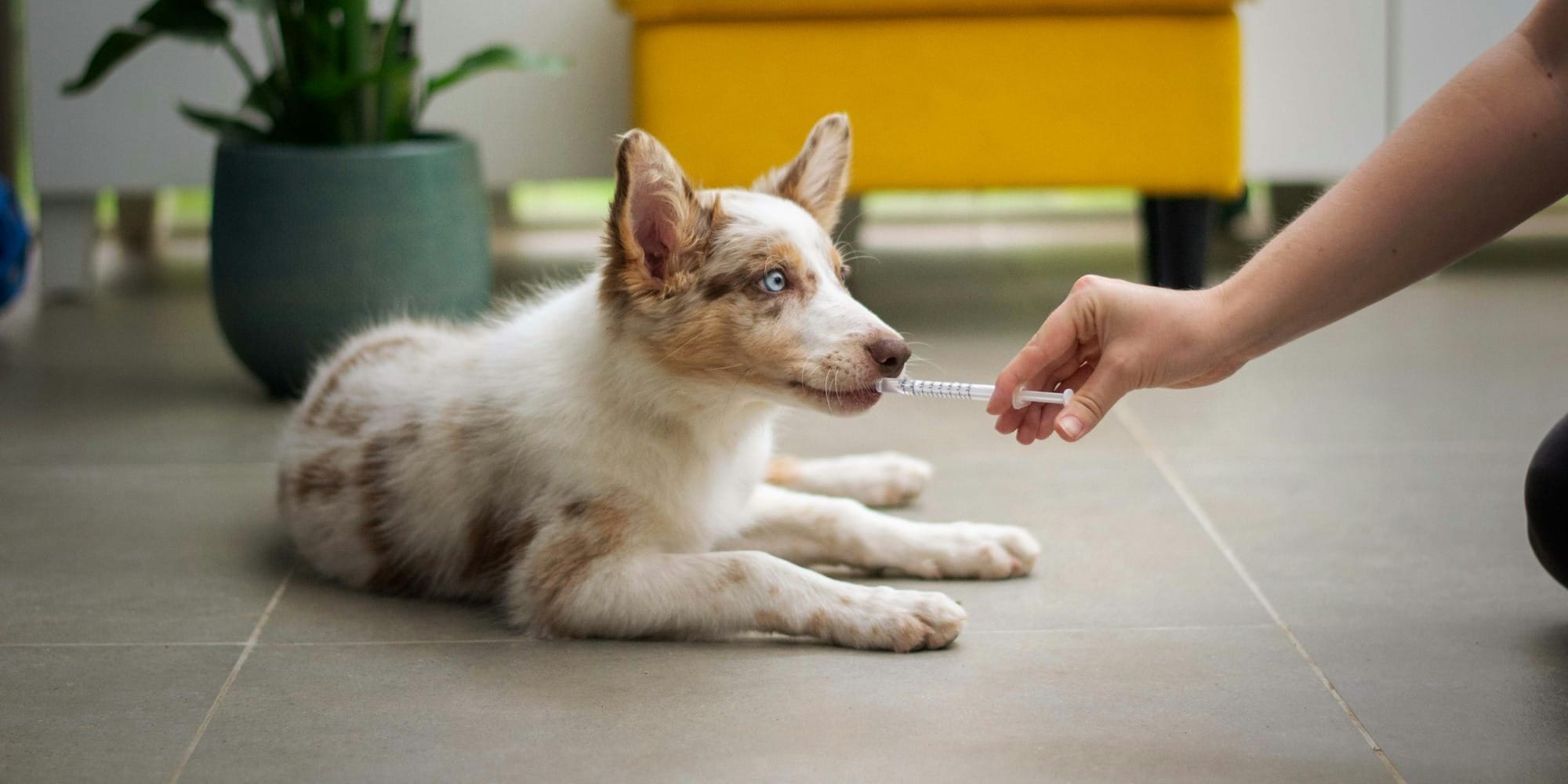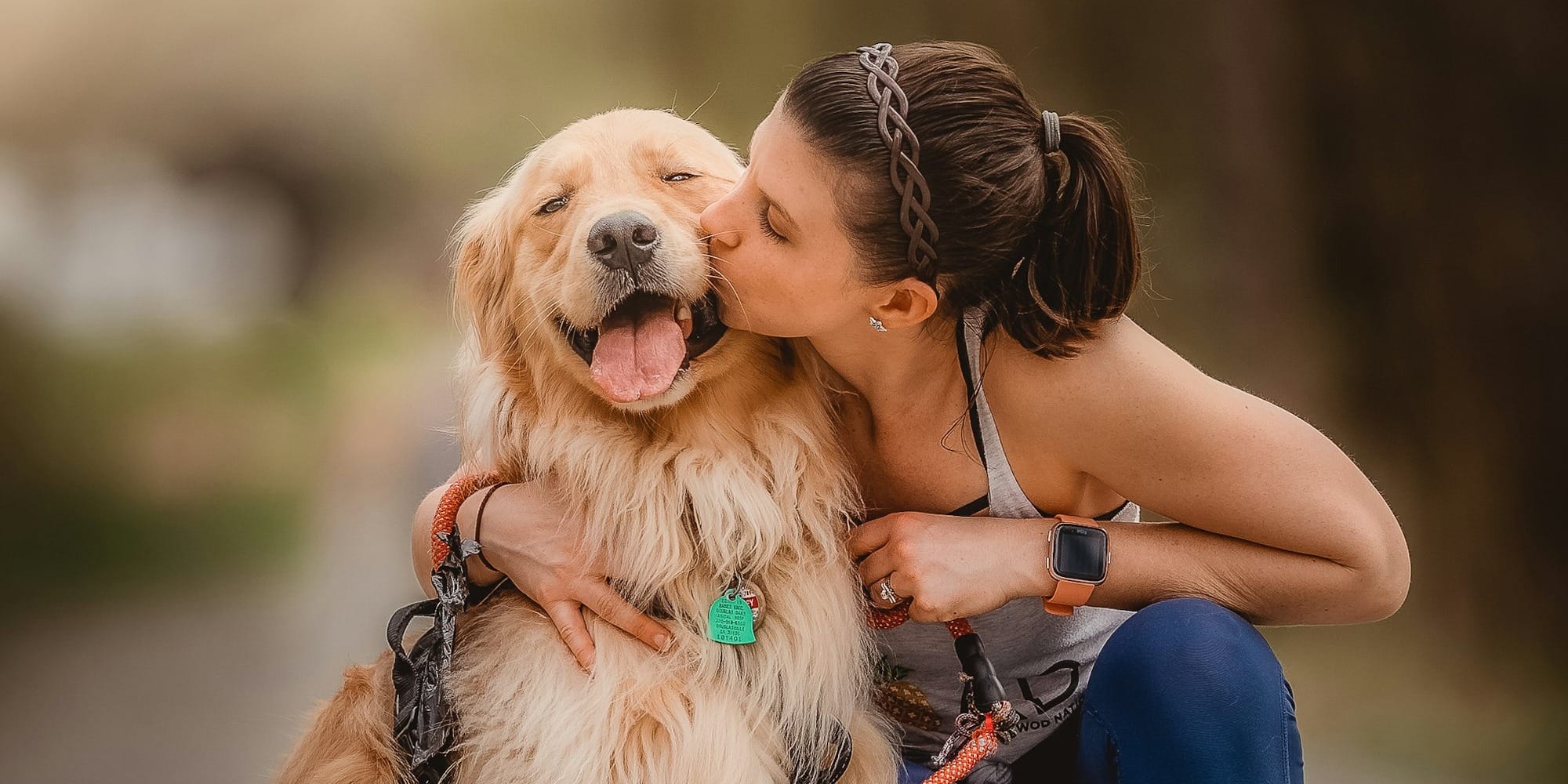Signs of Canine Dementia: Early Warning Symptoms in Senior Dogs
Recognizing signs of canine dementia early can make all the difference. Learn the key symptoms of cognitive dysfunction in dogs and how to support your senior companion through this challenging condition.

Watching your senior dog stare blankly at walls or forget where they are in your home can be deeply unsettling. If you've noticed these changes, you're likely searching for information about signs of canine dementia and what they mean for your beloved companion. Canine cognitive dysfunction affects nearly 14% of dogs over eight years old, with early symptoms that often start subtly before becoming more obvious.
This guide will help you recognize dog dementia signs, understand how cognitive dysfunction in dogs progresses, and discover practical ways to support your aging dog through this challenging condition.
Understanding Canine Cognitive Dysfunction

Canine cognitive dysfunction, sometimes called dog senility, is a progressive brain disorder similar to Alzheimer's disease in humans. This condition develops when protein deposits accumulate in your dog's brain, damaging nerve cells and causing brain tissue to deteriorate over time.
Senior dogs typically show symptoms between 11 and 14 years of age, though some dogs develop signs earlier. Starting with a healthy, fully trained adult dog can give you more quality years together before cognitive decline becomes a concern. Learn about the benefits of owning a fully trained Labrador for seniors for companionship and health support. The disease gradually affects memory, learning ability, awareness, and how your dog responds to their surroundings.
Many pet parents dismiss early changes as normal aging. However, recognizing true signs of canine dementia helps you seek veterinary care sooner. Early detection allows you to start dog dementia treatment that can slow progression and help your dog maintain a better quality of life.
The DISHAA Signs: Identifying Canine Dementia

Veterinarians use the DISHAA framework to identify the primary categories of dementia symptoms. Understanding these patterns helps you recognize when your dog needs professional evaluation.
Disorientation: A Key Sign Your Dog Has Dementia
Disorientation is often the most noticeable early sign of cognitive dysfunction in dogs. Your senior dog may seem lost in familiar surroundings, confused about daily routines, or unable to navigate spaces they've known for years.
Common disorientation behaviors include getting stuck in corners or behind furniture without knowing how to back out, staring at walls or into empty spaces for long periods, walking to the wrong side of doors or waiting at the hinge side, appearing confused about familiar walking routes, and standing motionless in the yard as if forgetting why they went outside.
This spatial confusion happens because the disease damages the parts of your dog's brain responsible for navigation and spatial memory.
Sleep-Wake Cycle Disruptions
Altered sleep patterns represent one of the most challenging signs of canine dementia for both dogs and their families. Your dog's internal clock becomes disrupted, causing confusion about day and night.
Watch for these sleep-related changes: sleeping significantly more during daytime hours while becoming restless at night, pacing, whining, or barking during nighttime hours, appearing confused or disoriented after waking from naps, and completely reversing their normal sleep schedule.
This nighttime restlessness, called sundowner syndrome, can severely impact your household's sleep. Your dog might wander through the house, vocalize repeatedly, or need constant reassurance during these confused episodes.
Interaction Changes With Family and Other Pets
Dogs with canine dementia often show dramatic shifts in social behavior. Your normally affectionate dog may withdraw from family interactions, showing less interest in petting or attention. Some dogs develop the opposite problem, becoming clingy and anxious when separated from you.
You might notice your dog no longer greets you enthusiastically when you come home, doesn't respond to their name as reliably, seems indifferent to family activities they once loved, or stops seeking out companionship altogether, preferring to lie alone.
Previously friendly dogs may become irritable or show unexpected aggression, particularly when startled or confused by their changing environment.
House-Soiling and Toilet Training Loss
Loss of house training frustrates many owners dealing with senior dog dementia. Your previously reliable dog might eliminate indoors without signaling they need to go out, forget their training completely, or have accidents shortly after coming back inside from a bathroom break.
This isn't defiance—your dog genuinely forgets their training or loses awareness of their bodily functions. Some dogs appear confused about the mess afterward, not understanding what happened or why.
Before attributing accidents to dog senility, rule out medical issues. Urinary tract infections, kidney disease, or diabetes can cause similar symptoms. Your vet can run tests to distinguish between physical illness and cognitive decline.
Activity Level Changes
Changes in purposeful activity often signal dogs have dementia. These changes go beyond typical aging slowness and reflect genuine confusion about intentional actions.
Common activity changes include decreased interest in toys, walks, or games your dog previously enjoyed, repetitive behaviors like walking in circles or constant licking, apathy with little enthusiasm for anything, and increased anxiety that drives constant pacing or restlessness.
Your dog might start toward their food bowl but wander away before eating, or begin playing with a toy then stop and seem confused about what they were doing. This lack of follow-through reflects brain-level confusion.
Anxiety and Fear Responses
Increased anxiety frequently accompanies signs of canine dementia. Your senior dog may become fearful of situations, people, or objects that never bothered them before.
Dementia-related anxiety includes excessive vocalization like whining, barking, or howling, especially when alone, trembling or fear responses to normal household sounds and activities, obsessive following where your dog can't settle when you're out of sight, and heightened startle responses to sudden movements or noises.
This anxiety stems from confusion and inability to make sense of surroundings. The world becomes unpredictable and frightening when memory fails.
Recognition Problems
As cognitive dysfunction in dogs progresses, your dog may struggle to recognize familiar people. They might react to family members as strangers initially before recognition kicks in, or show confusion about which person is which.
Some dogs fail to recognize their primary owner immediately when you return home, needing extra time to process your identity before responding normally. This symptom is particularly heartbreaking for families watching their companion struggle with basic recognition.
Early Warning Signs Your Dog Has Dementia

Catching symptoms early gives you the best chance to slow progression and maintain quality of life. These subtle changes often appear before obvious DISHAA symptoms develop.
Subtle Behavioral Shifts
Your dog might show small personality changes that are easy to dismiss. They might become slightly less responsive to familiar commands, hesitate before performing tasks they've done thousands of times, or seem to "zone out" more frequently than usual.
Watch for moments when your dog appears to forget what they were doing mid-action. They might walk toward their water bowl, then stop and look puzzled. Or they may start barking at nothing, then seem confused about why they started.

Changes With Family Members
Early signs your dog has dementia include struggling to recognize family members they don't see daily. Your dog might need a few extra seconds to recognize a visiting relative, or seem uncertain about which family member you're calling for.
Appetite and Eating Changes
While not part of DISHAA criteria, eating behavior changes often appear early with canine cognitive dysfunction. Your dog might forget they've eaten and beg for meals repeatedly, or lose interest in food because they forget they're hungry.
Some dogs develop unusual eating habits like repeatedly dropping food from their mouths or having difficulty locating food in their bowl even when it's directly in front of them.
How Senior Dog Dementia Progresses
Understanding typical progression helps you prepare and make informed decisions about your dog's care.
Early Stage Cognitive Dysfunction
Initial symptoms appear intermittently. Your dog has good days and bad days, making it easy to convince yourself nothing serious is wrong. Behavioral changes are subtle—a bit more confusion than usual, occasional accidents, slightly disrupted sleep.
At this stage, many dogs still enjoy life relatively normally. Early intervention with environmental changes, supplements, and veterinary care significantly slows how quickly dogs have dementia progress.
Moderate Stage Symptoms
As canine dementia advances, symptoms become more frequent and noticeable. Your dog experiences confusion regularly, shows decreased ability to adapt to changes, has increased house-soiling accidents, experiences worsening sleep problems, and demonstrates more obvious social withdrawal.
Your senior dog needs more supervision and help with daily activities during this stage. They might need assistance navigating stairs, more frequent bathroom breaks, or comfort during confused nighttime episodes.
Advanced Dog Senility
Advanced cognitive dysfunction involves severe mental decline. Your dog may consistently fail to recognize family members, lose most or all house training, experience extreme sleep-wake disruption, and become minimally responsive to their environment.
Quality of life becomes your primary focus during this stage. Your veterinarian can help assess whether your dog still experiences more comfortable moments than difficult ones.
Getting a Diagnosis for Canine Cognitive Dysfunction

If you've observed multiple signs of canine dementia, thorough veterinary evaluation is essential. Diagnosis involves ruling out other conditions that can mimic dementia symptoms.
What Your Vet Will Check
Your veterinarian conducts comprehensive physical and neurological examinations. They'll ask detailed questions about the behavioral changes you've seen, including when they started, how they've changed over time, and what specific symptoms your dog displays.
Come prepared to describe your observations using the DISHAA categories. Bring written records of concerning behaviors with notes about frequency, timing, and patterns. This documentation helps your vet make accurate assessments.
Diagnostic Testing
Blood work helps eliminate conditions like diabetes, kidney disease, thyroid problems, or liver dysfunction that cause dementia-like symptoms. Urinalysis checks for infections or urinary issues that might explain house-soiling accidents.
Your vet may recommend additional tests including blood pressure measurement, since hypertension affects brain function, or advanced imaging like MRI when appropriate and available.
Currently, no single test definitively confirms dogs have dementia. Diagnosis relies on identifying characteristic behavioral patterns while ruling out other medical causes.
Conditions That Mimic Dog Dementia Signs
Many health problems can look like cognitive dysfunction in dogs. Vision or hearing loss makes dogs seem disoriented or unresponsive. Pain from arthritis or other conditions causes behavioral changes, sleep disruption, and reluctance to move. Brain tumors, infections, or other neurological conditions need different treatments than canine dementia.
Your veterinarian's job is distinguishing true cognitive decline from these other treatable conditions. Sometimes senior dogs have both dementia and other age-related problems, requiring comprehensive treatment.
Dog Dementia Treatment Options

While no cure exists for canine cognitive dysfunction, several approaches can slow progression and improve your dog's daily functioning.
Medications for Cognitive Dysfunction
Selegiline (brand name Anipryl) is the only FDA-approved medication specifically for dog senility. It increases dopamine levels in the brain, potentially improving cognitive function and reducing symptoms in some dogs.
Your vet might also prescribe medications for specific symptoms—anti-anxiety medications for severe anxiety, sleep aids for profound nighttime restlessness, or pain medications if arthritis or other pain contributes to behavioral problems.
Dietary Support for Brain Health
Prescription senior dog diets formulated for brain health contain specific nutrients that support cognitive function. These foods often include antioxidants, omega-3 fatty acids, and medium-chain triglycerides that may help slow cognitive decline.
Your vet might recommend supplements including omega-3 fatty acids for brain cell health, antioxidants like vitamins E and C to reduce oxidative damage, medium-chain triglycerides providing alternative brain fuel, and SAMe supporting neurotransmitter function.
Environmental Management
Creating a supportive environment significantly impacts daily functioning in dogs with dementia. Maintain consistent routines for feeding, walks, and sleep—predictability reduces confusion and anxiety.
Keep your home layout stable. Avoid rearranging furniture or changing where your dog sleeps. Provide easy access to food, water, and bathroom areas with clear, uncluttered pathways.
Use nightlights throughout your home to help your disoriented dog navigate during nighttime waking episodes. Remove obstacles and tripping hazards from paths your dog uses regularly.
Mental and Physical Activity
Gentle mental stimulation helps maintain remaining cognitive abilities in senior dogs with cognitive dysfunction. Simple training exercises, appropriate puzzle feeders, and short walks in familiar areas provide stimulation without overwhelming your confused dog.
Regular moderate exercise supports overall brain health. Even if your senior dog moves slowly, consistent gentle activity benefits both physical and cognitive wellbeing.
Daily Life With a Dog With Dementia

Beyond medical dog dementia treatment, your daily care approach significantly impacts your dog's quality of life.
Creating Predictable Routines
Dogs with canine dementia thrive on consistency. Feed meals at the same times every day, take walks on familiar routes at regular hours, maintain bedtime routines that help your dog settle for sleep, and keep water bowls, beds, and food dishes in the same locations.
This predictability provides security for your confused dog. When they can anticipate what comes next, anxiety decreases and functioning improves.
Managing Nighttime Issues
For nighttime restlessness, establish calming bedtime routines including a short walk, gentle brushing, and quiet time together. Consider moving your dog's bed into your bedroom so you can provide comfort during confused episodes without fully waking up.
Some pet parents find that soft music or white noise machines help their dogs settle at night. DAP (dog appeasing pheromone) diffusers may reduce anxiety and promote calmness.
If your dog experiences severe nighttime confusion despite these strategies, your vet might prescribe medications to help them sleep more soundly.
Maintaining Your Bond
Focus on activities your dog still enjoys, even if they're simpler than before. Short walks in familiar areas, gentle petting and calm interaction, and regular grooming routines all help preserve your emotional connection even as cognitive abilities decline.
Be patient with accidents, confusion, and behavioral changes. Remember that your dog isn't being difficult deliberately—they're genuinely struggling with declining mental abilities caused by a progressive brain disease.
Quality of Life Considerations
As signs of canine dementia progress, quality of life becomes your primary consideration. This involves evaluating whether your dog experiences more comfortable, content moments than difficult, distressing ones.
Warning Signs of Declining Quality
Consult your veterinarian about quality of life when your dog shows more bad days than good days consistently, displays signs of distress or suffering that treatment can't manage, loses interest in all activities they once enjoyed, can no longer perform basic functions like eating or moving, or experiences extreme anxiety or fear dominating their daily experience.
Your veterinarian can help assess quality objectively using standardized evaluation tools designed for senior dogs with cognitive dysfunction.
Having Difficult Conversations
Many dogs live months or even years with well-managed cognitive dysfunction in dogs, so end-of-life decisions aren't always urgent after initial diagnosis. However, preparing yourself mentally for this possibility helps when difficult decisions arise.
Discuss your dog's prognosis with your vet, including what to expect as dog senility advances. Ask about signs indicating suffering versus manageable discomfort. Understanding what's ahead helps you make informed, compassionate decisions prioritizing your dog's wellbeing above all else.
Frequently Asked Questions
Can anything be done for a dog with dementia?
Yes, several interventions can help manage signs of canine dementia and improve quality of life. Medications like selegiline may slow progression in some dogs. Dietary supplements including omega-3 fatty acids and antioxidants support brain health. Special senior dog diets provide nutrients beneficial for cognitive function. Environmental modifications, consistent routines, and gentle mental stimulation all contribute to better daily functioning. Many dogs show meaningful improvement with comprehensive dog dementia treatment approaches that combine these strategies. The key is starting intervention early when you first notice symptoms.
What are the three stages of dog dementia?
Canine cognitive dysfunction typically progresses through three stages. The early stage features mild, intermittent symptoms like occasional disorientation, minor house-soiling accidents, and slight sleep disturbances. Dogs still enjoy relatively normal lives during this phase, and intervention can significantly slow progression. The moderate stage brings more frequent and noticeable symptoms including regular confusion, increased anxiety, pronounced sleep-wake cycle disruption, and greater difficulty with familiar tasks. Dogs need more supervision and assistance during this stage. The advanced stage involves severe cognitive decline with consistent failure to recognize family members, significant loss of house training, extreme sleep problems, and markedly reduced responsiveness to surroundings.
When is the right time to put a dog down with dementia?
This deeply personal decision depends on your individual dog's quality of life. Consider this option when your dog experiences more bad days than good ones, shows signs of distress or suffering that cannot be managed with treatment, loses interest in all activities they previously enjoyed, or can no longer perform basic life functions like eating or moving. Consult your veterinarian for objective quality of life assessments using standardized evaluation tools. They can help you determine whether your dog's cognitive dysfunction symptoms are manageable or causing unacceptable suffering. Many dogs with well-managed canine dementia live comfortably for extended periods, so this decision often isn't immediately urgent after initial diagnosis.
What medication is used for dog dementia?
Selegiline, sold under the brand name Anipryl, is the only FDA-approved medication specifically for canine cognitive dysfunction. It works by increasing dopamine levels in the brain, which may improve cognitive function and reduce dog dementia signs in some patients. Your veterinarian might also prescribe medications to manage specific symptoms of dog senility, such as anti-anxiety medications for severe anxiety, sleep aids for profound nighttime restlessness, or pain medications if concurrent conditions like arthritis contribute to behavioral changes. Additionally, while not medications in the traditional sense, supplements like SAMe, omega-3 fatty acids, medium-chain triglycerides, and antioxidants support brain health as part of comprehensive dog dementia treatment plans.
How quickly does dog dementia progress?
Progression of canine cognitive dysfunction varies significantly between individual dogs. Some dogs decline gradually over several years, while others deteriorate more rapidly over just months. Generally, early intervention and consistent management slow progression rates. Dogs receiving comprehensive dog dementia treatment including medications, environmental modifications, and supportive care typically progress more slowly than untreated dogs. Factors affecting how quickly dogs have dementia worsen include overall health status, genetics, age when symptoms first appear, and consistency of care provided. Regular veterinary monitoring helps track your dog's progression and allows for adjustment of management strategies as needed to maintain the best possible quality of life.
What are the first signs your dog has dementia?
The earliest signs of canine dementia often include subtle disorientation in familiar spaces, such as getting stuck in corners, seeming confused about room layouts, or standing motionless as if forgetting what they were doing. Mild sleep pattern changes like sleeping more during the day may appear before obvious nighttime waking problems develop. You might notice slight decreases in social interaction, reduced enthusiasm for favorite activities, or small house-training lapses in a previously reliable dog. These early symptoms often occur intermittently before becoming more consistent and noticeable. Paying attention to these subtle changes and seeking veterinary evaluation early provides the best opportunity to slow progression with appropriate dog dementia treatment.
Supporting Your Senior Dog Through Cognitive Decline
Recognizing signs of canine dementia early—including disorientation, sleep disruptions, social changes, house-soiling, activity alterations, and increased anxiety—empowers you to seek veterinary care promptly. Early intervention with appropriate medications, supplements, environmental modifications, and compassionate daily management can significantly improve cognitive function and quality of life for dogs with dementia.
Your senior dog has provided years of unconditional love and companionship. Now they need your patience, understanding, and support as they navigate the confusion of cognitive dysfunction in dogs. If you've noticed concerning behavioral changes, schedule a veterinary appointment for comprehensive evaluation and proper diagnosis.
With appropriate dog dementia treatment and dedicated care, many dogs with early cognitive dysfunction continue enjoying meaningful, comfortable lives for extended periods. You're not alone in this journey—your veterinarian and supportive communities of pet parents facing senior dog dementia can provide guidance and encouragement as you care for your aging companion through this challenging time.
If you're a senior considering a companion dog, choosing a well-trained adult Labrador can provide years of joy while being easier to manage than a puppy. Discover the specific benefits fully trained Labs offer seniors, including health advantages and simplified daily care.
Remember that signs of canine dementia don't mean your dog's life is ending immediately. They signal a need for adjusted care approaches that can keep your beloved friend comfortable, engaged, and connected with you for many more months or years together.




